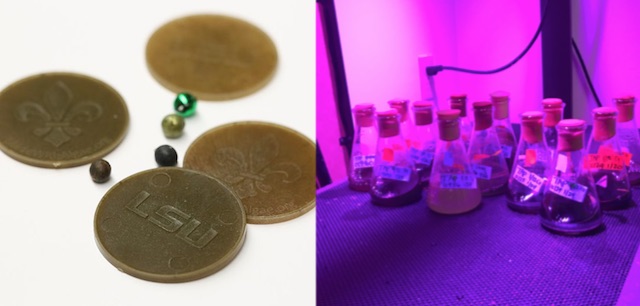
The debaucherous celebration of Mardi Gras may be fun for party-goers, but it’s terrible for the environment.
The New Orleans holiday can generate up to 960 tons of trash in a year, and the iconic Mardi Gras beads are a major contributor with hundreds of pounds of plastic beads ending up in the city’s water system.
Thankfully, a biologist from Louisiana State University has developed several formulas for biodegradable Mardi Gras beads – and he already has patents pending on some of his designs.
For one of his inventions, biological sciences professor Naohiro Kato has developed a process in which to grow a species of microscopic algae called diatoms, which he can then harvest and process into a powder that can form throw beads and doubloons. After the fun is had, these celebratory throws will biodegrade in soil in about one to two years.
“I believe we can change and do better. We have great resources to make our Mardi Gras celebrations more sustainable and to protect our environment and health,” said Kato.
Kato first began his research when one of his students at LSU accidentally discovered the basic ingredients which he has since refined to produce biodegradable Mardi Gras beads.
“My student was supposed to come into the lab three nights in a row to move our test tube samples of algae from the centrifuge to the freezer, but one night he forgot,” Kato said.
MORE: Researchers Have Finally Created Simple Eco-Friendly Machine That Recycles Used Diapers
The next morning, Kato experienced his “Aha!” moment when he found a large glob of algae accumulating oils on the bottom of the centrifuge.
Kato immediately thought of using it to make Mardi Gras beads. Earlier, he had been at a party chatting with people who wanted to make Mardi Gras more “green” – and he believed that the algae could be the biodegradable solution they were looking for.
He got down to work growing a large quantity of microscopic algae, or microalgae, in a six-foot kiddie pool outside. Louisiana’s warm climate, sunshine, water and nutrients, such as fertilizer, make it an ideal environment to naturally mass-produce microalgae. He grows a species of microalgae that is easy to grow, strong and profitable, especially for the nutraceutical industry, which produces vitamins and supplements and uses microalgae to market their products as vegetarian or vegan.
LOOK: He Has Created a Single-Use Bottle That Fully Decomposes in 3 Weeks, and All Profits to Charity
The biggest challenge for producing more environmentally sustainable beads is offsetting the high cost of manufacturing – but the growing demand for microalgae from the nutraceutical industry makes Kato’s invention potentially profitable. He plans to produce microalgae for nutraceutical companies to offset the relatively high cost to make biodegradable Mardi Gras beads, which can cost up to three times as much as plastic beads to produce.
He has a patent pending to make beads entirely out of microalgae using the leftover biomass unused by the nutraceutical industry. He has launched a spinoff company called Microalgae LLC in Baton Rouge to support this business model, and he says that he has already been approached by some angel investors.
Kato is also collaborating with several other university professors in order to develop a variation of the bead that is made with wood fiber.
Meanwhile, Kato is in discussion with a nutraceutical company and awaiting a contract in order to begin production of the biodegradable Mardi Gras beads.
Clean Up Negativity By Sharing The Good News With Your Friends On Social Media – Feature photo by McKinley Corbley




















